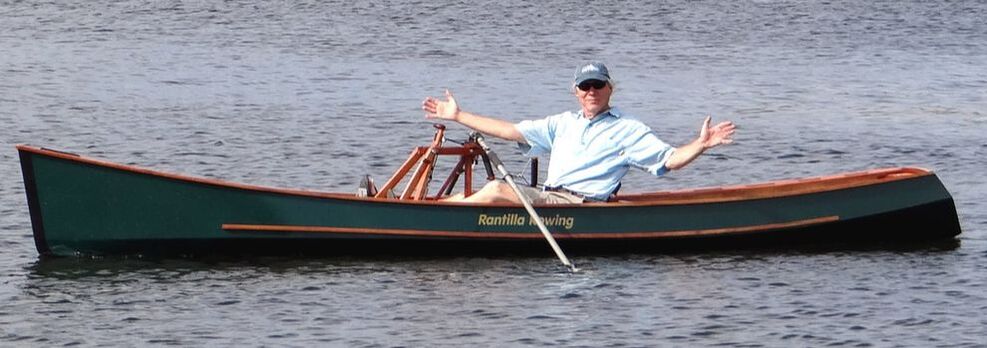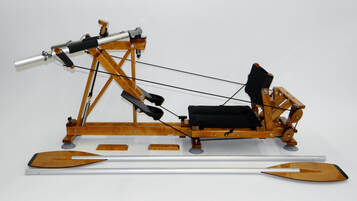Frontrower™ - The Ultimate Rowing Machine
We call the FrontRower™ the "ultimate rowing machine" because:
- You row it outdoors on the water (not in a gymnasium).
- You row it facing forward (not backward).
- It gives you the option of rowing with your feet (hands-free).
- You can also row it with just your hands, or hands and feet combined.
- It comes with a comfortable padded seat with adjustable backrest.
Many people appreciate the exercise qualities of rowing a conventional rowboat, but wish they could see where they are going without twisting around.
Many people enjoy paddling a canoe, but wish they could use their legs for more power and better exercise.
Many people have disabilities (such as arm amputations) that prevent them from enjoying the pleasures of rowing or paddling.
The Frontrower™ solves all of the above problems, and does more:
Many people enjoy paddling a canoe, but wish they could use their legs for more power and better exercise.
Many people have disabilities (such as arm amputations) that prevent them from enjoying the pleasures of rowing or paddling.
The Frontrower™ solves all of the above problems, and does more:
- The oars lift out of the water, feather, and return to the front automatically.
- It is easy to use and can be less effort than walking.
- In the full body mode, it gives you the same high-quality low-impact exercise as conventional rear-facing sliding-seat rowing.
- It is powerful and efficient, and has competed successfully in some of the most grueling long distance competitions in the world (see Bragging Rights and Rowing Efficiency).
You can install the Frontrower™ in many existing canoes and rowboats (see Slide Show of Owner's Boats).


